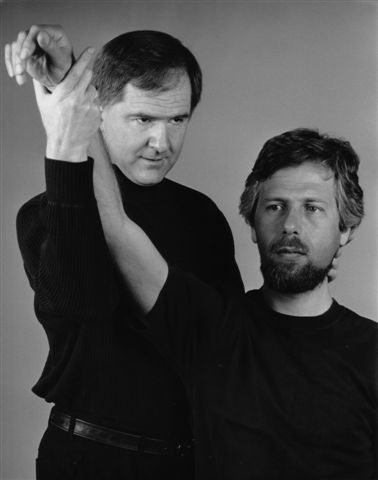In previous articles I have reported on exceptional wellness programs and what contributed to their effectiveness. I’d like to add a most unusual health practitioner to this group.
His name is Shmuel Tatz and his patients consider him to be a remarkably talented and sensitive hands-on therapist. He is first and foremost a licensed physical therapist – but with a range of skills and knowledge that has grown and matured from years of study and experience – topped off with the confidence of a master and a proud dedication to his craft.
Tatz is no ordinary physical therapist, limited to the modalities that consumers have come to expect. His menu of therapies includes magnetic therapy, manual therapy, light therapy, sound therapy, shortwave daithermy and auriculo therapy to name a few of the treatments he employs. Tatz was trained as a physical educator in Lithuania, then migrated to Israel and studied physical therapy. Since 1985 he has been helping his clients in a comfortable and carefully designed studio at Carnegie Hall. So it’s natural that among his statisfied patients are performing artists that include Lou Reed, Kathleen Turner, Peter Jennings, Mstislab Rostropovich, Eli Wallach, Yehudi Menuhin, Isaac Stern.
Before coming to see Tatz for help, the typical patient has already seen 2-3 physicians, 2-3 chiropractors, and an acupuncturist, says Tatz. The question arises then: Why have so many so-called therapists failed to diagnose and remediate their long endured health condition(s)? How has Tatz succeeded in providing the harbor of last resort?
These questions provoked a strong emotional response from Tatz – tingled with a hint of animosity toward the health insurers in particular and at the system that prepares people to become physical therapists. Both, he says prevent the development of maximum competence and severely restrict the employment of modalities and equipment so freely and expertly employed in the Tatz Studio.
Tatz feels that patients cannot be healed by a physical therapist that after four years of special training goes to work in rehab program or some doctors office. In his opinion, what future therapists need goes beyond the issuance of a license to practice.
Like Md.’s, physical therapists should broaden and sharpen their skills while working under the supervision and tutelage of a master physical therapists like Tatz. It takes a ling time, says Tatz, to develop the sensitivity and skills required to learn the art of palpation and other hands on skills that enable a physical therapists to become a capable diagnostician and healer.
Tatz points out the dampening effects if health insurance programs that set the rules for the use of “approved” modalities as well as the incompatible payments to physical therapists. To Tatz they (the health insurance industry) are business, business, and business. According to Tatz, the insurance company tells the physical therapists what he is allowed to do, how many times he can see the patient and how much he will be reimbursed for his services. “He (the therapist) is a human being … he has to pay rent and electric bills. Can you imagine a physical therapist gets $20 for a treatment? Do you know what this office costs me for one hour? How can a physical therapists run the business?”
What Tatz would like his profession to do is to extend the learning time period for physical therapists after licensing. That would require a post graduation apprenticeship for 3-5 years with an experienced physical therapist then employment for six months with other successful physical therapists. Then and only then is the physical therapist ready to go solo. Finally, the physical therapist opens his own practice in a “small room” and works independently, under no obligation to any health insurance company. This would enable him/her to devote one hour for every patient. This, says Tatz, is how he did it when he started 25 years ago.
Since Tatz has received a great deal of commendable publicity (articles, TV, radio), I expected that members of his profession and organizations representing physical therapists would have invited him to speak at their conferences and conventions. Given that Tatz incorporates other modalities such as chiropractic and massage, I asked him if he has received entreaties from schools that train chiropractors and massages therapists. “Nobody invites me. Why should be invited? I don’t have nay connections with organizations. I’m not interested in politics. I’m interested in helping people.” People, he said, call him for treatments; schools and professionals, none.
In addition to poorly prepared physical therapists there are patients who go from therapist to therapist and don’t get better. Why? Tatz tells the story of a patient who suffered from health condition for 15 years without relief during which she had gone to five chiropractors, four acupuncturists and a massage therapist. Numerous treatments: but no one bothered to educate her on how to sit and get out of a chair. This, Tatz says, is like physician giving pills. This lack of patient education is one reason why Tatz is now working on his doctorate in physical education.
Tatz expects his patients to actively participate in the healing process. This, he says, is essential to maintaining good health and increasing the quality of life. Tatz teaches his patients how to move their bodies in a variety of life situation and expects them to do the exercises at home to support the therapies he is providing. He also doesn’t hesitate, when appropriate, to recommend a yoga program or another specialist to meet the patient’s need’s.
While I understand what motivates Tatz to adopt the “Lone Ranger” approach to his practice, it is a choice he has made – and for him it may be the best choice. Despite his arguments about he need for post school training and apprenticeships for physical therapists, and the unfairness of health insurance policies, other organizational arrangements are evolving as conventional and integrative medicine narrow their differences. We have learned about the advantages offered by programs with a multidisciplinary staff, working together and sharing their knowledge and experience. Ultimately, this should benefit the patient who, depite the talent of a single individual therapist, will require the combined wisdom of a team approach. What comes to mind are two programs I observed and wrote about in previous issues of “To Your Health”: Olive Leaf Wholeness Center and The Center for Health and Healing. While health insurance does cover some of the costs at these centers, it does not appear to appreciably diminish the overall quality of care.
As reflected by the many patients, who gladly put their faith in this highly gifted professional, surely there is room fro Shmuel Tatz’s in the world of health care. But given that Tatz represents the upper level of exemplary therapists, and given that the system that produces physical therapists is not about to change any time soon, the creation of a healing environment where therapists can exchange information with knowledgeable members of their team, is worth critical study. This said, some of the sensible changes in the education and placement of therapists that Tatz proposes deserve a serious study and debate. Also, his condemnation of restrictions imposed by private and public health insurers needs better publicity and active consumer advocate pressure on government to change a very flawed system that robs patients of greater treatment potential and therapists of a decent return fro their services.
From April L.
I was injured from an accident in 1996, I tried many therapists but pain persisted, in addition to the pain I could not move reach or lift anything. The constant pain was disconcerting to say the least.
Someone who heard of his wonderful ability to focus on problems led me to Shmuel Tatz.
After one visit I felt some relief. I saw Shmuel 2 times a week for 4 weeks. His amazing fingers found problems I was not aware of – such as stomach difficulties and other parts of my body that I never realized were related to the distress my body was suffering.
I now have total mobility, can lift, stretch and am feeling great. In addition to this my sinuses have cleared from the magnetic therapy Shmuel uses.
*
From P.S.
I had a broken foot that was treated by an Orthopedist who by the way could not believe the progress I made with Shmuel so quickly.
I saw Dr. Tatz 2 times a week for 2 months. I think the aspect of the healing that was most beneficial was the way he manipulates the area and his ability to concentrate on the painful and disturbed areas of the body.
I am totally fine now and recommend Shmuel to everyone who needs help.
After the publication of the article title “An Unusual Therapist”, we received many letters. Therapists Shmuel Tatz responds to some of your questions:
Do you do massage?
In physical therapy massage is called soft tissue mobilization. It is a big part of my practice. About 25-35% of most treatments is massage.
Do you do adjustments?
In physical therapy adjustments are called manipulations. They are the same as adjustments with a major difference. Adjustments can sometimes be traumatic for the joints. By applying mobilization, which is small intra-joint movement, there is usually good improvement, which avoids the need for adjustments.
Is yoga a part of your practice?
Everything I do when I am teaching people how to move is based on yoga tradition.
Do you sell magnets?
I use high tech electronic magnets. The machine costs many thousands of dollars and is only for professional use.
My pediatrist has advised a bunion operation. Can you help me with this?
I can help both before and after an operation. Ideally i would trat you before and avoid the operation altogether.
Do you treat Parkinson or MS?
The first day after a diagnosis of Parkinson, MS or any other neurological condition, a physical therapists should be contacted for an intensive course of treatment.
Do you treat migraines?
I have success 85-90% of the time.
I live far away and have acute sciatic pain. Does it make sense to travel three hours to Manhattan?
It is possible to do physical therapy twice a day. You ca stay in the city and work intensively for a couple of weeks and expect 90-100% improvement.
How do I find a therapist in my neighborhood?
Try to see an independent practitioner not primary affiliated with a hospital or insurance company, and who is working in solo practice. After the first treatment, listen to your body, think about what the therapist did and if there is a physical improvement continue.
To Your Health!
by Milt Chaikin



